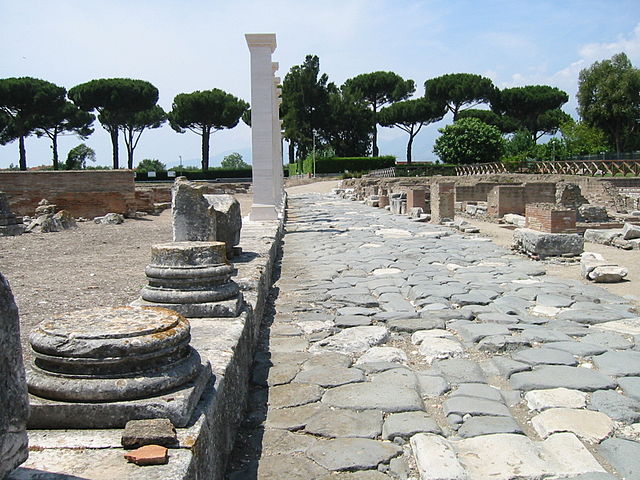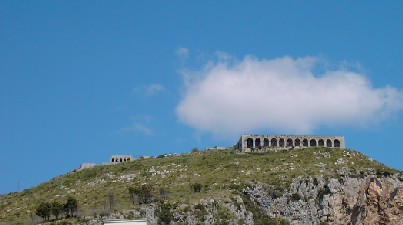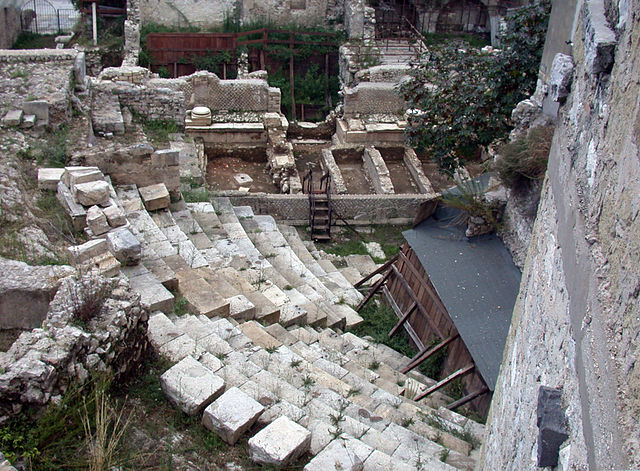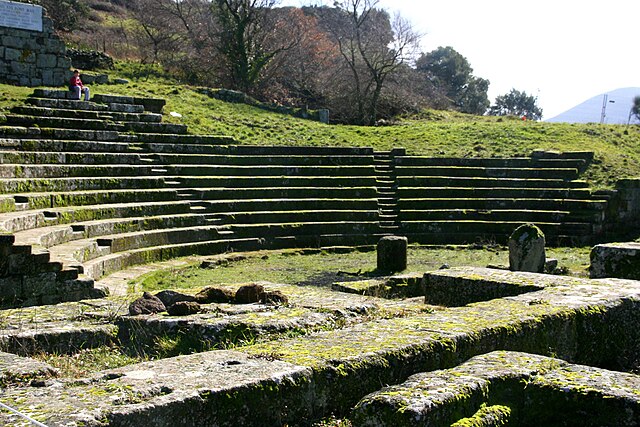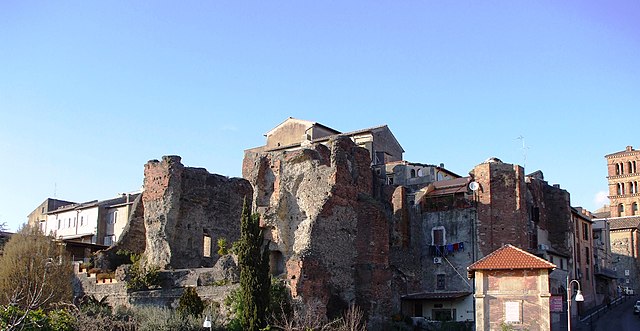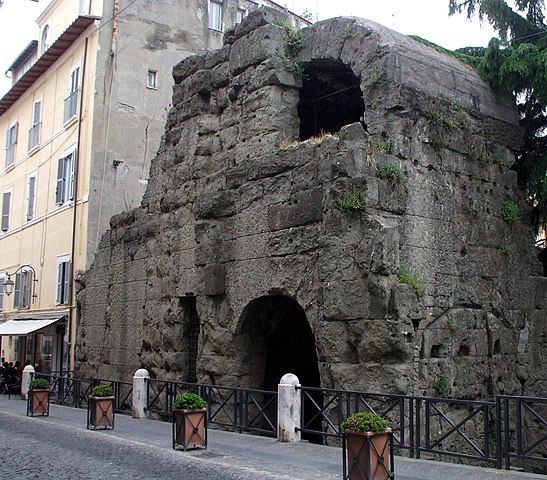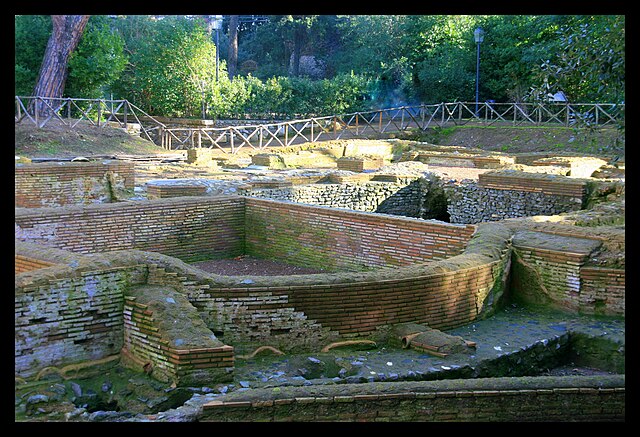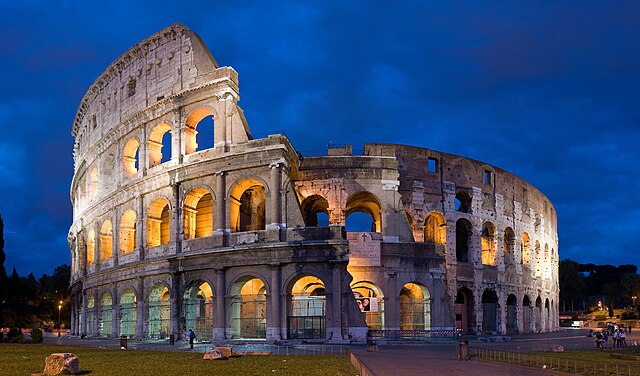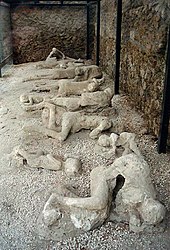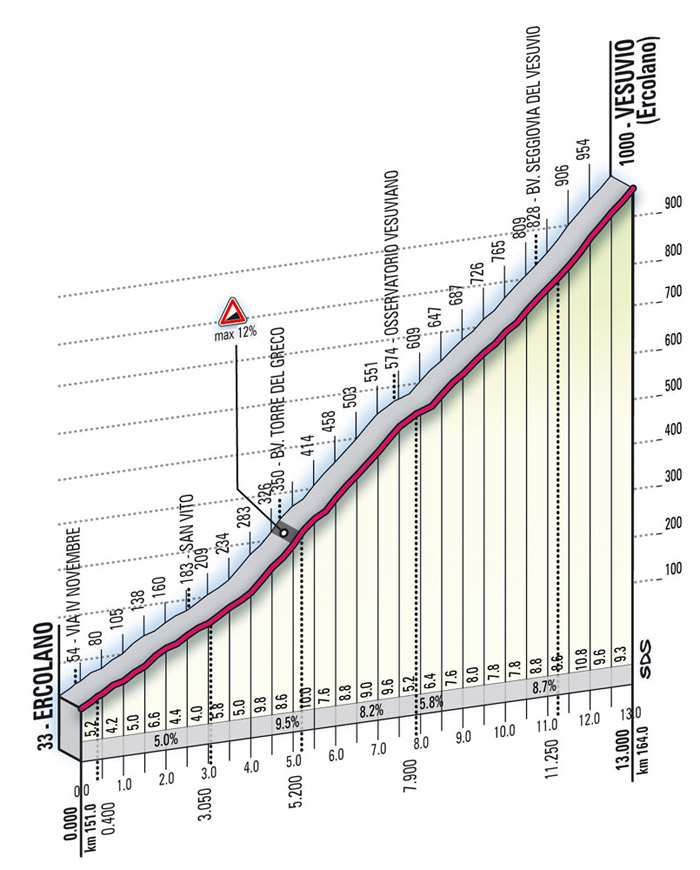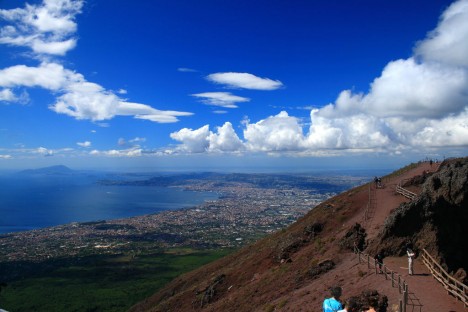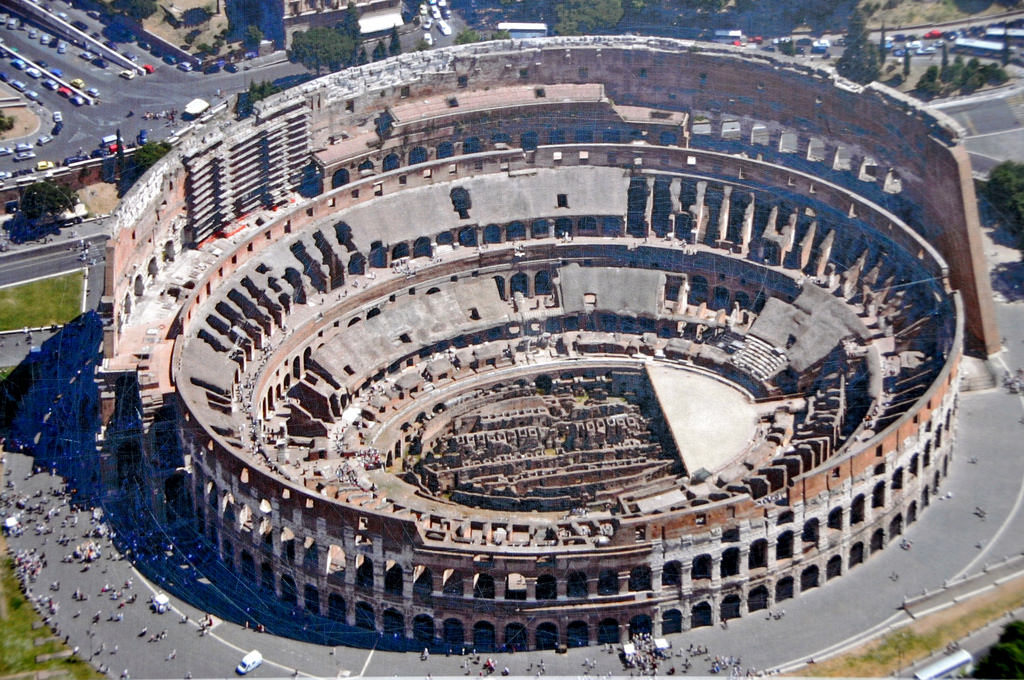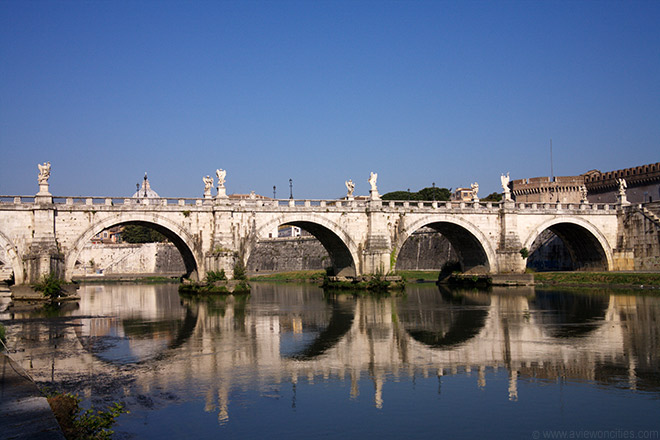Mare Nostrum stage 28: Capua – Roma: 261km, hilly
The technical and cultural description of this stage are rather easy: it’s the original Via Appia with some side excursions.
The race caravan moves back to Capua for the final stage, which will neither be a flat parade or a tt. With this stage I’m hoping to enable an unexpected change at the higher end of the GC, just as happened in the 1947 Tour de France. And if the GC seems already set, there’s still a course that may provide interesting racing. Furthermore, the sheer amount of Roman landmark sprints means that there are still minutes to gain at those intermediate sprints.
Construction of the Via Appia started in 312BC, by Roman censor Appius Claudius Caecus (hence the name). During the first Samnite War Rome had difficulties transporting its armies to southern Italy and therefore construction of a well maintained road to Capua, Rome’s ally and one of the biggest cities in Italy, started.
The road seemed to achieve its purpose. The outcome of the Second Samnite War was at last favorable to Rome. The road was the main factor that allowed them to concentrate their forces with sufficient rapidity and to keep them adequately supplied, wherein they became a formidable opponent. Later the Via Appia was extended to Beneventum and finally to Brundisium, making it the most important road in Italy.
And, as already mentioned, the whole of the original Via Appia was the site of the crucifixion of the remnants of Spartacus’ army.
So, let’s take a closer look at today’s course.
From the official start a bit outside of Capua the peloton heads west to ancient Sinuessa, current Mondragone, where the first Roman landmark sprint awaits the peloton.
Sinuessa was founded as a Roman colony in the early 3rd century BC. It rose rapidly to a place of importance. Its position on the Via Appia doubtless contributed greatly to the prosperity of Sinuessa; for the same reason it is frequently incidentally mentioned by Cicero, and we learn that Julius Caesar halted there for a night on his way from Brundisium to Rome, in 49 BCE. It is noticed also by Horace on his journey to Brundusium, as the place where he met with his friends Varius and Virgil.
Next on the road are the ruins of the Roman villa of San Lomato, including the foundations of the whole complex and some mosaics.
Next is the ancient town of Minturnae, whose Roman remains consist of an amphitheatre, a theatre, an aqueduct, a
capitolium and a portion of the original Via Appia.
Fifteen kilometres further on the road lies ancient Formiae, which was a renowned resort town during the Roman republic era. One can see, among others, the remains of an amphitheatre, one of the largest Roman era cisterns, remains of an aqueduct, a stretch of the original Via Appia with a fountain alongside and beachheads of the Roman port.

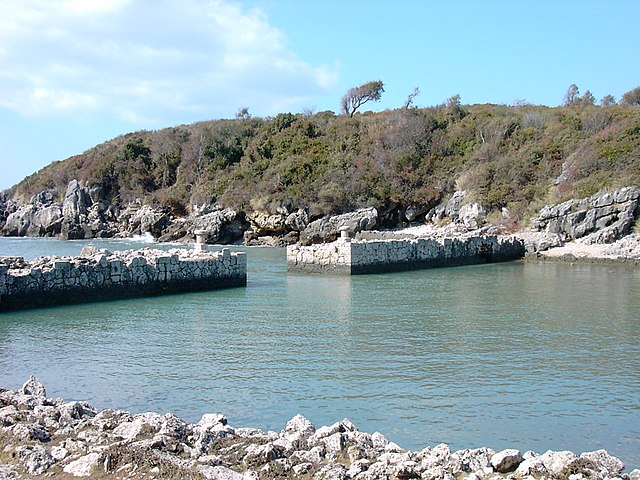
Just outside the town the Via Appia goes along the tomb of Cicero, one of Rome’s greatest politicians and philosophers, who was murdered here in 43BC. His influence on the Latin language was so immense that the subsequent history of prose in not only Latin but European languages up to the 19th century was said to be either a reaction against or a return to his style. Cicero introduced the Romans to the chief schools of Greek philosophy and created a Latin philosophical vocabulary with neologisms such as evidentia, humanitas, qualitas, quantitas, and essentia, distinguishing himself as a translator and philosopher. Aforementioned examples show that even today our vocabulary is partly indebted to him.

This Roman landmark sprint is followed by the first climb of the day, rather an elongated stretch of false flat that steepens a bit towards the end. The shallow descent leads to ancient Fundi, that grew from an army camp along the Via Appia. The current historical centre still resembles the rectangular layout of a Roman military camp. The remains of the Roman bathing houses can still be seen.
Leaving Fundi, the Via Appia bends back to the coastline and reaches the shores of the Tyrrhenian Sea at ancient Anxur (or Tarracina), which boasts a plethora of Roman remains. Above all, there’s the temple of Jupiter, but also
a stretch of the Via Appia, remains of a theatre and of a
Capitolium
After Anxur, the ancient Via Appia went in an almost direct line to Rome. We’ll follow that line for 35km, until the hamlet Tripontium. One can still admire several pieces of Roman road furniture, like milestones,
commemorative styles and also
some bridges over canals that already existed 2000 years ago.
At this place today’s course will diverge from the Via Appia and head for some hills, not only just to increase the difficulty of this stage, but also in search of some Roman history. The second climb of the day crests at Norba, a member of the Latin League which became a Roman colony in 492BC. Originally it served as an important border fortress, but after the Second Punic War it was the place of detention for the Carthaginian hostages. During the civil war of 82BC it was captured and destroyed by Sulla, and by the 1ste century AD it was already mentioned by Plinius on a list of extinct towns. Today the protective walls can still be seen, more than 2500 years after they have been built.
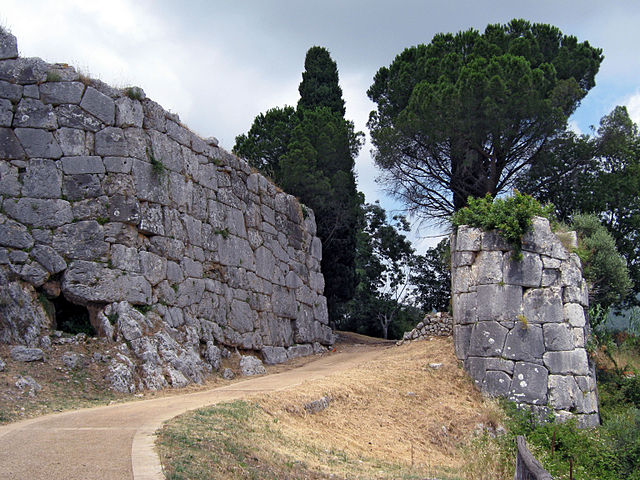
The Roman landmark sprint, which is considered to be the summit of the climb is followed by some false flat and a short descent to the foot of the Rocca Massima. In the past this hill was also climbed in Roma Maxima, but here it’s from its most difficult side. The descent and some rolling roads lead to a climb on the flanks of the Monte Tagliente, almost immediately followed by that to Rocca Priora. This is a less interesting part of the course, but that changes when nearing Frascati. In the Roman era there were several villas on the current territory of Frascati. Far more important, however, was the hilltop town of Tusculum. Tusculum is first mentioned in history as an independent city-state with a king, a constitution and gods of its own. When Lucius Tarquinius Superbus, the last King of Rome, was expelled from the city in 509 B.C., he sought military help from his son-in-law, one of the leading men of Tusculum. After Rome became the predominant Latin city, Tusculum became an ally of Rome.
Later it became the first municipium cum suffragio, a self-governing city within the Roman empire.
Only one climb awaits the peloton in this race: the Rocca di Papa. Its descent leads to thearea of Alba Longa, according to legend the birthplace of Romulus and Remus. Today this more or less corresponds with Albano Laziale, which became a mountain retreat for the rich and famous in Rome, if they wanted to escape the heat, noise and stench from the capital. Pompey and Seneca, among others had a villa here, and a theatre, baths and various temples were constructed in the first two centuries AD.
In the centre of Albano Laziale the course of the Via Appia is resumed, and this time for good. First it’s the modern Via Appia, but after 245km, the ancient, partly refurnished Roman road is used.
Soon the Roman landmark sprints, come one after another, too much too describe or show. So I’ll post some pictures of the most impressive.
Almost every kilometre there’s a noteworthy landmark, until the peloton finally enters the historic city centre by the Porta Apia, the most impressive gates in the Aurelian walls.
There’s only slightly less than 5km to go, along the baths of Caracalla, the Circus Maximus,theatre of Marcellus and clockwise around the forum Romanum, to finish in front of the Colosseum.
Climbs:
San Donato: km76; 7.4km @ 3.2%; 4th cat
Norba: km156; 8.8km @ 4.5%;3rd cat
Rocca Massima: km169.5; 4km @ 8.7%; 2nd cat
Monte Tagliente: km198.5; 5km @ 4.7%; 3rd cat
Rocca Priora: km204.5; 4.2km @ 4%; 4th cat
Tusculum: km218; 4.4km @ 6%; 3rd cat
Rocca di Papa: km229; 5.2km @ 6.1%; 3rd cat
Roman Landmark sprints:
Sinuessa: km 30
Villa Romana di San Lomato: km 37
Minturnae: km 50
Formiae: km 65
Cicero’s Tomb: km 67
Fundi: km 86.5
Anxur: km 106
Tripontium: km 141
Norba: km 156
Villa Lucidi: km211.5
Tusculum: km218
Albano Laziale: km235.5
Quintili aqueduct: km248
Casal Rotonda: km249
Villa Quintili: km250
Baths of Capo di Bove: km253
Circus of Maxentius: km254
Catacomb of Callixtus (crypt of the popes): km255
Porta Appia: km256.5
Terme di Caracalla: km258
Circus Maximus: km259
Total distance raced: 6002km

I made a mistake when mapping my last stage at first: originally I followed the modern Via Appia (the SS7) from Capua, while that has a more direct course than the Via Appia antica. When I noticed my mistake a few days ago, I couldn’t change any of the other stages, resulting in a small exceedance of the 6000km limit.
Phew! I'm done.
I wonder what i will do with my spare time during the Christmas holidays.





